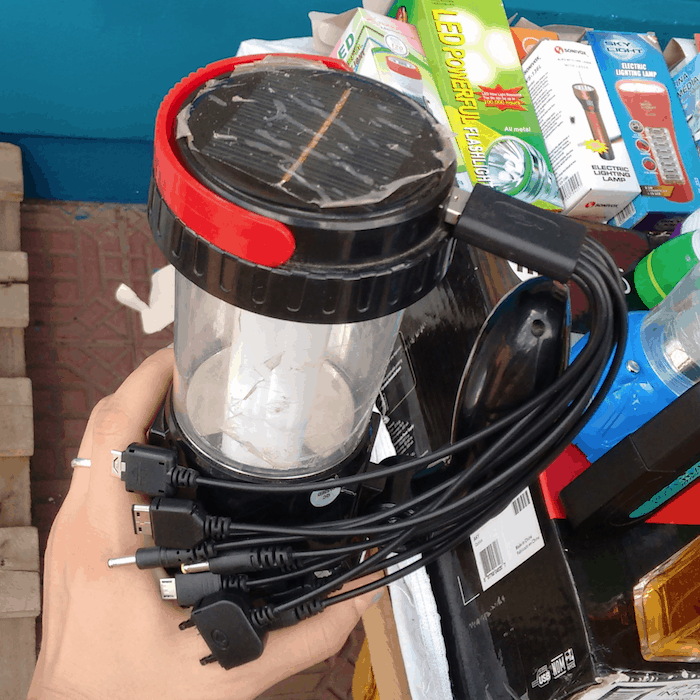Your Cheap Solar Lamp is Garbage
you wouldn’t buy an inferior product, so Why should the BoP?
The company I founded, Colibrí, distributes and finances solar technology for low-income, off-grid households. As a result, we’re always talking about the base of the pyramid, which, as NextBillion readers are well aware, is the poorest but largest socioeconomic group in the world. Combined, the BoP holds a lot of purchasing power. That, and the fact that they are the largest income demographic in the world, means we should be paying lot more attention to them – especially as consumers.
While companies large and small may pay lip service to this fact, many misconceptions persist, and it’s good practice to dispel them when we can. Here are two that are deserving of the dustbin:
- People forget that those at the BoP are consumers.
- People assume the BoP doesn’t care about quality.
One of the major drivers of this misconception is the assumption this market, in fact, isn’t really a market at all, but rather a collection of poverty cases. It’s easy to think of “the poor” in two-dimensional, homogenous terms and rattle off assumptions like “They’re poor people, aren’t they happy with anything?” or “Isn’t something better than nothing?”
Incorrect. As the charity research organization SolarAid once put it, “The quickest way to fix a problem is the best” (way), and in most cases, that means quality.
The key takeaway here is that BoP consumers are consumers, and just like any consumer, quality matters – in fact, arguably even more so for the BoP. When you’re making an investment, you want to make sure you’re getting the best bang for your hard-earned buck. Of course, there is a spectrum of consumers. It would be an oversight to not recognize this, just as it’s an oversight to think of the BoP as a homogenous demographic, rather than as functioning, consuming societal members.
At our company, we focus on introductory solar products such as dual solar lights and cell phone chargers that retail for $42. This is an ideal, high-quality, affordable solution for a low-income demographic with baseline needs, which, in Latin America (Nicaragua is our primary market at the moment), are quality light access and cell-phone charging capabilities. Our customers typically earn anywhere between $30-$100 per month; however, they’re usually spending between $5-$15 per month on alternative lighting solutions such as kerosene, candles and flashlights, and also traveling and paying to charge their cell phones. (We do finance purchases and as we grow, we are looking to offer pay-as-you-go products. For more on why pay-as-you-go is necessary, please check out follow-up post to this one.)
We may be technology agnostic, but we are quality concerned. We only work with products that do well in rugged environments, have at least a five-year product lifetime, come with a warranty and have been rated and tested by entities such as Lighting Africa. A sleek, nice design matters, too. Our current favorite? Greenlight Planet.
Yes, this means they’re more expensive – but we’re catering to realities of the market. Quality sells. The way to truly fix a problem is the best way – and the best way to alleviate energy poverty is to distribute quality, long-lasting goods.
Understandably, I’m often faced with questions which tend to be worded as assumptions like, “Why and how would a poor person buy that?” or “You should consider something cheaper. You’ll take it to market faster.”
I’m speaking primarily for Nicaragua, but in the Latin American market right now, this is what you’re getting with “cheap”: flimsy, poor-quality often Chinese-made solar lights with a handful of cell phone charger cords, dumped in bulk at the port for street vendors to get at. A quick fix, if you will.
Plot twist: The product breaks within one to two weeks.
During Colibrí’s pilot project in 2014, one of the most surprising, but repeated, questions I fielded from rural Nicaraguan customers was: “Was this product made in China?” This was often asked before any other questions. It’s also commonplace for Colibrí to encounter a customer who tells us, “Oh, I had a solar product. It was one of those made in China that they sell on the streets. It broke after week. I’d much rather have what you guys are offering.” If this doesn’t tell you that the BoP knows and looks out for quality, then I don’t know what does.
Because doing business at the BoP, we’re competing in the open market. The cheap stuff on the street is oftentimes our biggest competition. It’s an easy buy, but a bad spend. Everyone is guilty of this. I regularly buy $5 headphones at CVS or $6.95 sunglasses at H&M only to have them break or get lost every three to four weeks. I end up spending close to $200 over the years by repeatedly buying new headphones and sunglasses, instead of making a one-time investment of $100 and having a quality product last me years and years – because I also care about it enough to not lose it and to treat it well.

This product, among others of its kind, was for sale on the street in the big market in Matagalpa, Guanuca. It’s easy to see that this product is, excuse my French, a piece of crap. The selling point? Just $11. (Image courtesy of the author)
It’s the same cycle for anything, including a solar product for a BoP consumer. Why buy the non-functioning $12 piece of plastic every few months when you can buy the $42 beautiful, high-quality, long-lasting solar device? It’s a no-brainer investment and the BoP knows that, just like any quality- and value-conscious consumer would.
So, cheap, low-quality products – bring it on! Quality sells, but more importantly, quality stays.
A version of this post originally appeared on the Colibrí company blog.
Morgan Babbs is the founder and CEO of Colibrí.
- Categories
- Energy, Technology
- Tags
- Base of the Pyramid, solar
